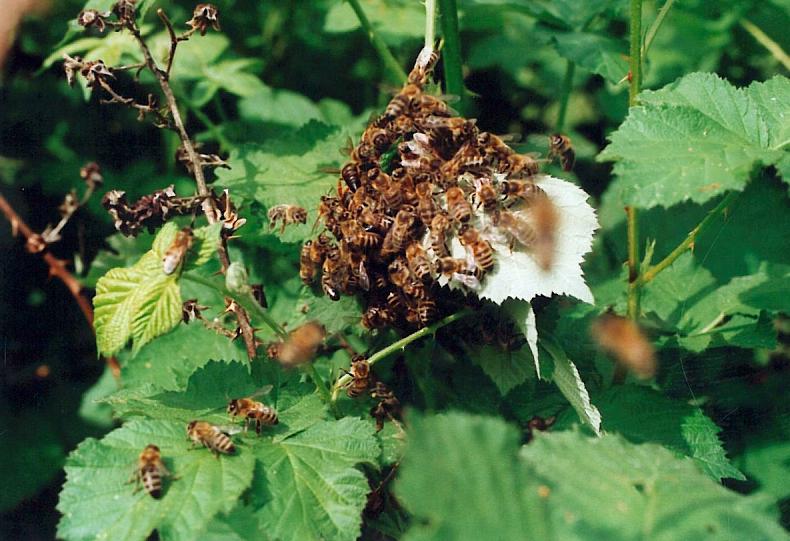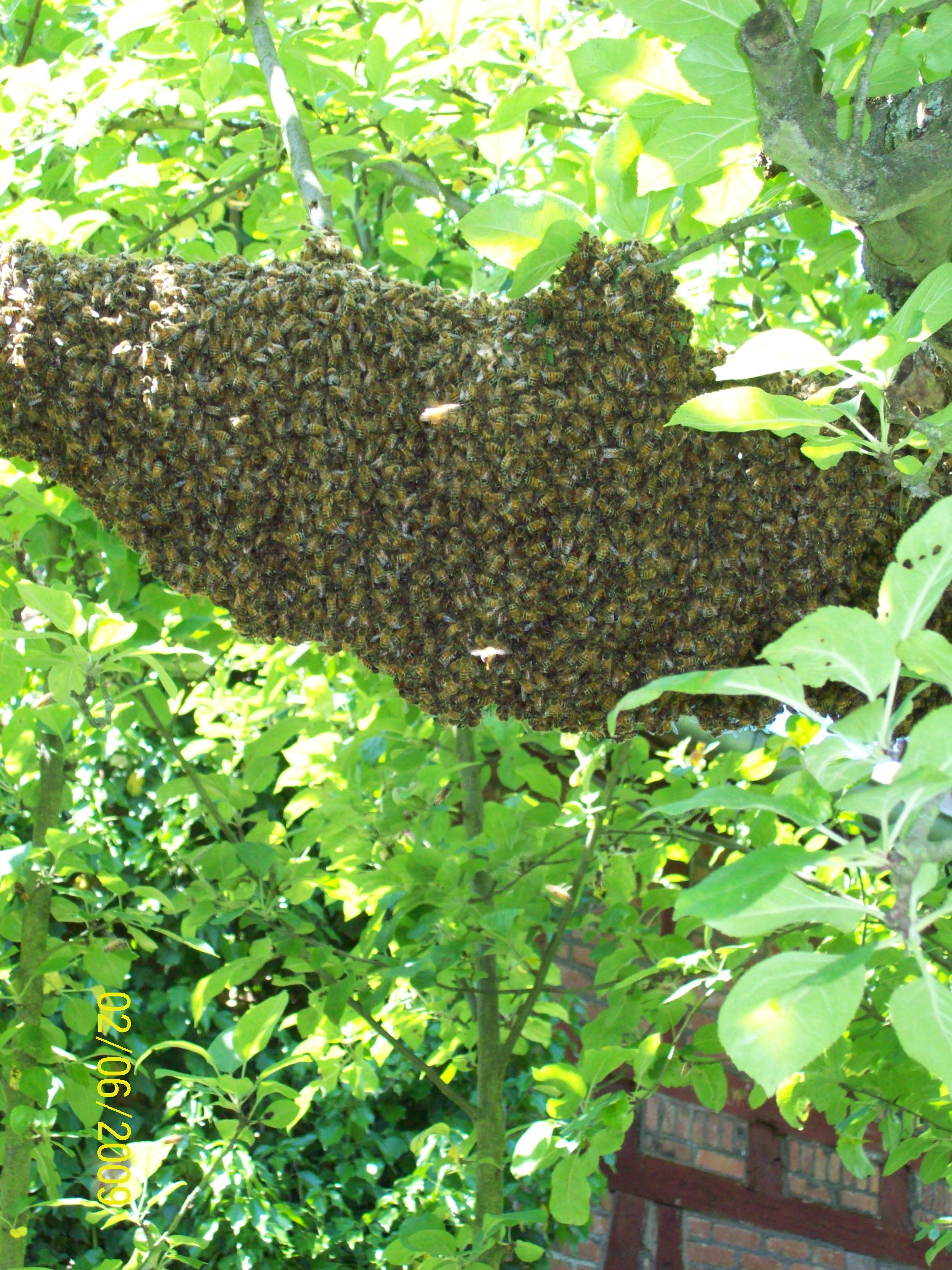



Sign
up for bee-therapy | Beauty-cure
| Anti-aging | Infertility
| Cancer
of the breast | Hashimoto-Thyreoiditis
|
Crohn's disease
Rheumatism
| Juvenile idiopathic
arthritis | Heart
diseases | Arteriosklerosis
| MS |
Diabetes
| Neurodermitis
| Obesity |
Depression
and Psychosis
Allergies
| Alzheimer
/ Parkinson | Diseases
of the kidneys | Pancreas
| how
to improve fitness of the body
Propolis
| Beeswax | Royal
Jelly | Organic Honey |
Comb
in the Comb | Raw Honey
| Organic Beekeeping
Basic Course
Expertise
| Courses | Home
| Research | Save
Beecolonies-Bienenpatenschaft | Certification
| Training Apitherapy
What's New From The Beescience
It can originate effortless the impression,
that too many actors in the range of the natural bee keeping and books
to this theme get taken in my publications under the magnifier and disregarded
will be the bee science. But this is not so. The newest knowledge from
beescience get also discussed, so for example in the 72nd Letter (letters
on organic beekeeping and more... part III) and in e-zine Apicuture.
In the 80ies of the 20th Century the hypthesis, the longer a summerbee
may live, the more often they may fly out to forage nectar or honeydew,
was the cause for doing research on genetical bound differences in the
lifespan of the worker bees. As from a laboratory-scientist of former times
not otherwise to be expected, he had, in order to determine the lifespan
of the workers, hold them captive in the laboratory without further ado.
By taking a bee out of the context of it’s colony I should think it’s unlikely
that it may be able to tell us about it’s sectets. Nowadays it is being
stated from the scientific side:
„If that behaviour is really suitable to determine the genetical bound
lifespan of workerbees, may be questioned. Winterbees don’t survive wintertime,
if they are being hold captive in cage, they do it only in their colony"
(1).
Therefore one is today working with marked bees. In average one may
say that a queen lives 3-4 years, a workerbee 6-8 months (socalled winterbees)
or just a few weeks (socalled summerbees), and a drone about one summertime.
Normally their life will be set an violent end by the socalled drone-battle.
Nevertheless there are also exceptions:
„During estimation of populations, by which all combs of a colony has
been inspected thoroughly, we still met the male sex at least in one colony
of an beesite in autumn. The conclusion ‘here’s something wrong!’ has mostly
proven to be wrong after a further abservation of the colony in the following"
(2).
This is an interesting observation which may indicate that in former
times when beeraces haven’t been treated so much by artificial breeding
methods, it may have been rather selfevident that a few drones stay in
the colony also during winter period. Mr. Liebig says: „But I suppose almost
no drone will succeed in overcoming the winter" (3). Nevertheless it may
be possible.
How does the life cycle of a beecolony look like? Also here Mr. Liebig
has carried out interesting research. In 1996 June 5 he has put a small
colony of about 900 bees together with a brood comb free of brood, a honey/pollen-comb,
a freshly hatched queen and 8 empty frames in a magazine. In the end of
june, just before the first brood was hatching, the colony had only just
500 bees and a broodnest of 400 cells. Within two months until the end
of august, the amount of bees increased to 8.000 bees. In Oktober 10 the
colony with about 7800 bees has been prepared for overwintering. During
the winter the colony lost only very few bees. In March 6 it still had
about 7500 bees and already 8.400 broodcells. The broodnest increased over
three months constantly and reached in May 28 it’s maximum with nearly
40.000 broodcells. In June and July the colony took care throughout about
more than 30.000 broodcells. In August and September the broodnest decreased
again, and in 1997 Oktober the colony was free of brood like the year before.
How do you may judge the lifespan of a single bee correctly? One observes
the state of the colony in the beginning of it’s developement, in the case
of Mr. Liebig’s colony in 1996 June 27 and 21 days later, in June 18. In
June 27 the colony had 500 bees and 4.000 broodcells. According to Mr.
Liebig the 500 bees of the young colony have been at least 22 days old
in June 27. Until the estimation of the population in July 18 these bees
must have died. Only these or also still others too?
„But not only these, also a large part of bees who wasn’t hatched yet
in June 27! In the estimation interval between June 27 and July 18 the
colony 19 could had increased to 4.000 bees, on condition that all brood
were hatched and no single bee had gone lost. But in fact the colony became
just stronger by 1.750 bees. If one starts from the assumption, that the
older bees die first, then the 500 bees who have been born in the small
colony before June 5, have vanished in the estimation intervall; on top
of that almost half of the bees who have hatched in the estimation interval.
Those have grown in average not even two weeks old" (5).
A similar result brings the next estimation interval between July 18
and August 8. In many textbooks you can find a lifespan of 4-6 weeks. This
would mean, that a brood maximum of 4.000 cells leads to a colony strength
of 50.000 to 80.000 bees. Only rarely counts a colony more than 40.000
bees in summer according to Mr. Liebig, although in the observation period
from 1996 July to 1997 October more than 275.000 bees have hatched! But
in the same time period also more than 265.000 bees have died. Mr. Liebig
therefore concludes:
„In 1997 from April to August the summerbees of the colony #19 have
grown in average between 2 and 3 weeks old! That result is no single case,
but the rule. Therefore is the claim one finds in many ‘textbooks’ rgarding
the description of the lifespan of the workers, according to which the
workers become a forager only after three weeks ‘in-door-duty’ and continue
to forage for once more three weeks, not correct" (6).
Upon which factors does the lifespan depend? By far the most important
is taking care of brood. The more a beecolony rears brood, the more shortlived
are it’s workers. Nevertheless the colonies grow in springtime the more
they are rearing brood. And because it is on top of that well known that
the effectivity of breeding in springtime depends to great extent upon
the amount of bees, the strength of the colony in the end of winter has
a keyfunction for the further colony developement. Mr. Liebig says there
is a simple rule: more bees - more brood, more brood - more bees etc. (...
and more honey). The foraging during a honeyflow doesn’t seem to influence
the lifespan of the summerbees at all; because in „lazy" colonies workers
don’t live longer than in „hard-working" colonies. Also the processing
of liquid or stiff fodder, which is given to the bees for feeding of young
colonies or for making winterfodder, has according to Mr. Liebig, no effect
on the lifespan of the workers. Those don’t live longer, if they get sirup
or fodder in form of caped honeycombs instead of sugar water. Even if there
are no differences - as Mr. Liebig maintains - between the kinds of fodder,
the bees are not more preoccupied regarding processing of sugar water,
stiffed fodder or sirup, thus, the whole colony is going to be strengthened
by a winterfodder containing a special herbtea (7) and honey from own apiary.
„Breeding can neither be stimulated by a flow of nectar or honeydew
nor by feeding. Compared with that it is possible that the broodnest is
being restricted by a heavy honeyflow or feeding, which has a positive
effect on the lifespan of the workers, who don’t have to take care about
the brood" (8).
Summerbees being short-lived is an essential property of a colony, which
is only little influenced by the environment. It is the expression of a
high bee-turnover, which is during brood-period being strived for by all
colonies no matter what origin and which sense may be to prevent the outbreak
of diseases (9). That biological defence against diseases should not be
weakened by beekeeping methods, thus as a complete weakening of the colony
not by artificial insemination and grafting*.
___________
*)
More information and address source for Bee-produce from beekeeping
considering the character of bees - for instance: comb honey with
natural cristalization (not heated) and honey from natural combs
(neither extracted nor stirred nor heated before filling) as well as pure
beewax without residuals under :
List
of beeproduce
Centre
for social Medicine and Natural Apitherapy
Centre
for Ecological Apiculture.
Beekeeping
courses (practical and distance) in the Centre for Ecological Apiculture:
start now with ecological top-bar-beekeeping for beginners!!
**)
see also "Apicultural
Review Letters I"
1. Liebig, G., 2002: Über das Lebensalter der Bienen.
Kurzlebigkeit ist die Grundlage der Bienengesundheit. Deutsches Bienenjournal
10 (2): 48-50. Berlin, Germany.
2. Ibid.
3. Ibid.
4. Ibid.
5. Ibid.
6. Ibid.
7. See Internet Course #
01 und #02.
Bad Sooden, Germany.
8. Liebig, G., 2002, see note 1.
9. Ibid.
Revisited edition in Apiculture
1/ 2003, Vol. 2

